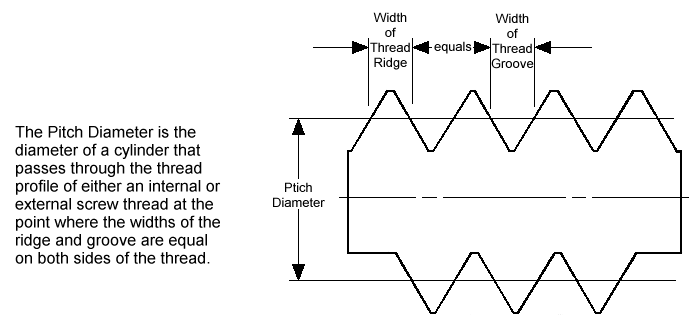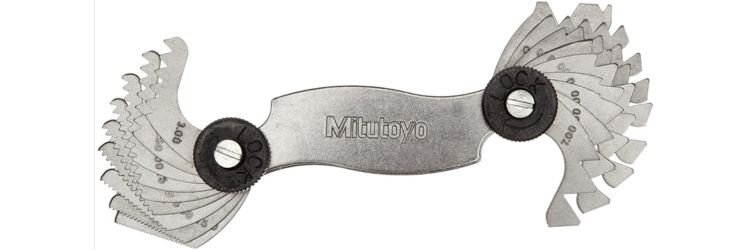Understanding Pitch Diameter: A Critical Factor in Specialty Fasteners
Fasteners play a crucial role in various industries, holding together structures and components with precision and reliability. Understanding the pitch diameter is essential when specifying specialty fasteners. Pitch diameter, why it matters, how to measure it, and which industries rely on precise specifications for their specialized fastening needs.
.png?width=750&height=250&name=Understanding%20Pitch%20Diameter%20A%20Critical%20Factor%20in%20Specialty%20Fasteners_electronic%20specilty%20threaded%20fastener_%20blue%20chip%20engineered%20products%20(2).png)
Pitch Diameter Defined:
The pitch diameter of a fastener is a fundamental measurement that determines the effective size of the threaded section. The imaginary diameter lies at the threaded area's midpoint, where the threads’ width equals the width of the spaces between them. In simpler terms, it represents the average size of the threads on a fastener.
Why Pitch Diameter Matters:
The pitch diameter is a critical parameter because it directly influences the fit and functionality of the fastener. Unlike the outer diameter (OD) or the inner diameter (ID), the pitch diameter is less prone to variations due to surface imperfections or wear and tear. Therefore, it provides a more consistent measure of the threaded section, allowing for better predictability in fastener performance.
Thread pitch geometry is a crucial aspect of threaded fasteners, determining the distance between adjacent threads and the threads' shape. The ANSI/ASME B1.1 standard provides classifications for thread pitch, ensuring uniformity and consistency in threaded products. Thread pitch geometry id defined by the ANSI/ASME B1.1 standard.
Thread Pitch Geometry:

Thread pitch refers to the distance between corresponding points on adjacent threads, typically measured in millimeters or threads per inch (TPI). It plays a vital role in determining the mechanical properties and functionality of threaded fasteners. The main components of thread pitch geometry include:
1. Pitch (P): The distance from one point on a thread to the corresponding point on the next thread, measured parallel to the axis of the thread.
2. Lead (L): The distance the nut or bolt advances along the axis in one complete turn.
3. Thread Angle (α): The angle formed by the intersection of the flanks of the thread.
4. Helix Angle (β): The angle formed by the thread's helix with a plane perpendicular to the axis.
5. Crest and Root: The crest is the top of the thread, and the root is the bottom. These play a role in distributing loads and ensuring engagement.
Classifications by ANSI/ASME B1.1:
The ANSI/ASME B1.1 standard classifies thread pitch for various applications, providing a standardized system to ensure compatibility and interchangeability. The classifications include:
1. Unified Inch Screw Threads (UN/UNR):
• UN (Unified National): This series includes coarse (UNC) and fine (UNF) threads. UNC has fewer threads per inch, making it suitable for general-purpose applications, while UNF has more threads per inch, providing better strength and resistance in finer applications.
• UNR (Unified National Extra Fine): UNR threads are even finer than UNF and are typically used in applications requiring precision and high resistance to vibration.
2. Unified Metric Screw Threads (M):
• The metric thread series includes coarse (M coarse) and fine (M fine) threads. The M coarse threads are standard, while the M fine threads are finer and used in applications requiring high strength.
3. Special Purpose Threads:
• This category includes threads designed for specific purposes, such as Acme threads for power transmission or buttress threads for applications requiring high axial load capacity.
4. Multiple Lead Threads (LM):
• Multiple lead threads have more than one thread form on the same cylinder. These are used in applications where faster linear movement is required.
5. Special Threads:
• This category encompasses various non-standard threads used for specialized applications, including trapezoidal threads and worm threads.
These classifications provide engineers and manufacturers with a standardized system for selecting the appropriate thread pitch for specific applications, ensuring compatibility and performance.
Understanding thread pitch geometry and the classifications outlined by the ANSI/ASME B1.1 standard is essential for selecting the right fasteners for diverse industry applications. Standardization ensures that threaded components can be interchanged, promoting efficiency and reliability in using threaded connections.
Measuring Pitch Diameter:
Accurate measurement of pitch diameter is imperative for ensuring the compatibility and reliability of fasteners. Here's an essential guide on how to measure pitch diameter:
1. Select the Right Tools: Use precision instruments such as micrometers or thread gauges to measure pitch diameter.

2. Identify Thread Type: Determine the thread type (UNF, UNC, metric, etc.), as different threads have distinct measurement methods.
3. Thread Micrometer: For external threads, place the thread micrometer on the fastener and measure the distance between corresponding points on opposite flanks of the threads.

4. Three-Wire Method: For internal threads, the three-wire method involves placing three wires tangent to the threads and measuring the distance between them, applying a formula to calculate the pitch diameter.
Specialty Fasteners Requiring Pitch Diameter Specification:
.png?width=750&height=250&name=Understanding%20Pitch%20Diameter%20A%20Critical%20Factor%20in%20Specialty%20Fasteners_specilty%20threaded%20fastener_%20blue%20chip%20engineered%20products%20(1).png)
Specific fasteners, particularly those used in critical applications, demand precise pitch diameter specifications. Examples include:
1. Aerospace Fasteners: Aircraft and spacecraft rely on specialty fasteners where precision is paramount for safety and performance.
2. Medical Equipment: Fasteners in medical devices require exacting specifications to ensure reliability and compatibility.
3. Automotive Industry: Specialty fasteners in automotive manufacturing demand precise pitch diameter for optimal performance and safety.
4. Oil and Gas Sector: Fasteners used in oil rigs and pipelines must adhere to stringent specifications to withstand harsh environmental conditions.
Understanding and specifying pitch diameter in specialty fasteners is indispensable for industries where precision and reliability are non-negotiable. Whether it's aerospace, medical, automotive, or oil and gas, the pitch diameter is a key factor in ensuring the integrity and functionality of critical fastening applications. By adhering to rigorous measurement standards, manufacturers and engineers can guarantee the performance and safety of the structures and systems that rely on these specialized fasteners.

